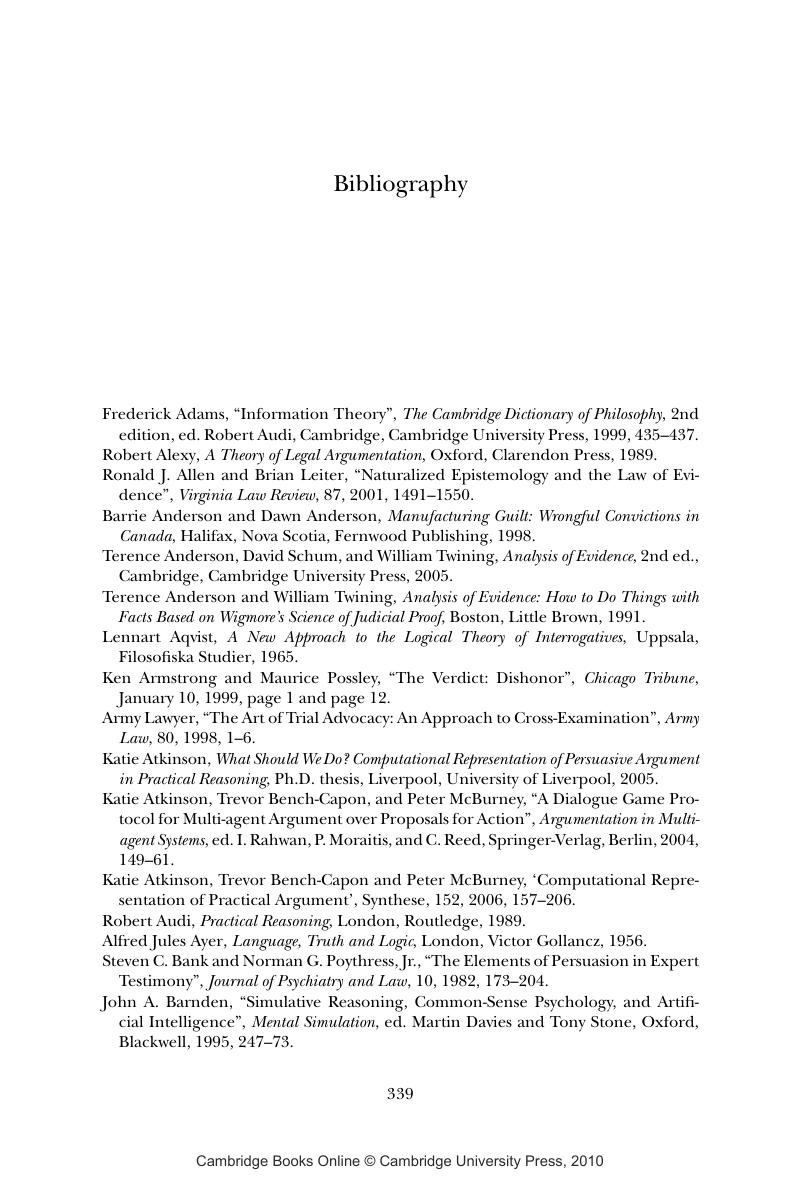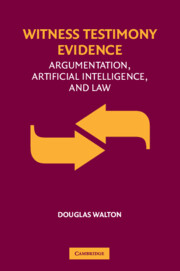Book contents
- Frontmatter
- Contents
- List of Figures and Tables
- Acknowledgments
- Introduction
- 1 Witness Testimony as Argumentation
- 2 Plausible Reasoning in Legal Argumentation
- 3 Scripts, Stories, and Anchored Narratives
- 4 Computational Dialectics
- 5 Witness Examination as Peirastic Dialogue
- 6 Applying Dialectical Models to the Trial
- 7 Supporting and Attacking Witness Testimony
- Bibliography
- Index
- References
Bibliography
Published online by Cambridge University Press: 03 February 2010
- Frontmatter
- Contents
- List of Figures and Tables
- Acknowledgments
- Introduction
- 1 Witness Testimony as Argumentation
- 2 Plausible Reasoning in Legal Argumentation
- 3 Scripts, Stories, and Anchored Narratives
- 4 Computational Dialectics
- 5 Witness Examination as Peirastic Dialogue
- 6 Applying Dialectical Models to the Trial
- 7 Supporting and Attacking Witness Testimony
- Bibliography
- Index
- References
Summary

- Type
- Chapter
- Information
- Witness Testimony EvidenceArgumentation and the Law, pp. 339 - 352Publisher: Cambridge University PressPrint publication year: 2007



